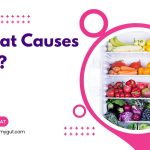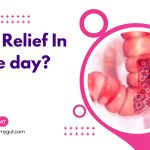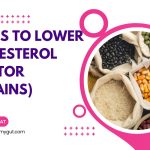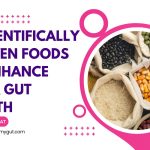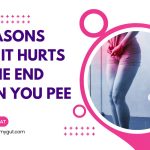Does Your Liver Cause Pain After Eating?
Our content is not intended nor recommended as a substitute for medical advice by your doctor. Use for informational purposes only.
Does liver pain increase after eating? (5 Facts).
The following facts will help you understand the nature of liver pain and its relation to eating.
1. Liver pain is rare.
The liver is the largest organ in your body. It lies in the upper right abdomen. However, The liver tissue is insensitive to pain. Pain only results when its capsule (a thin layer enveloping the liver) stretches or inflame.
As a result, most chronic liver diseases such as fatty liver disease, alcoholic hepatitis, and liver cirrhosis are painless 99% of the time.
2. Liver pain is constant (unlikely to increase after eating).
Also, once liver pain starts, it continues as a constant dull ache in the upper right abdomen.
So, A pain that increases for a short time after eating then resolves is unlikely of liver origin.
Consider other common causes of pain after eating as:
- The gallbladder and bile ducts.
- The colon.
- The stomach and esophagus.
Colicy or burning pain after eating is unlikely to be of liver origin. Colics after eating arise from the digestive tract with gas pain, irritable bowel syndrome, infections, etc.
Burning pain after eating is often due to stomach issues (gastritis and peptic ulcer disease) or esophageal reflux (acid reflux).
MORE:
- Fatty Liver Pain: Causes, Mimics, and Treatment.
- When to worry about ALT levels?
3. Liver pain is associated with other symptoms of liver affection.
In most cases, liver pain is associated with other symptoms of liver affections. elevation
- Jaundice: yellowish discoloration of the skin and eye whites.
- Dark urine.
- Light-colored stools.
- Fatigue.
- In chronic diseases, weight loss, vomiting of blood, swelling of the lower limbs and the abdomen (ascites).
4. Characters of liver pain:
1. Constant dull ache: the most common characteristic of liver pain is dull aching in nature. The dull aching liver pain is often independent of eating and lasts for days, weeks, or months.
2. Sharp liver pain: Sharp pain in the liver area is often associated with severe liver diseases such as liver cancer and perihepatitis. It increases by movement, not by eating.
3. Throbbing liver pain: It is a constant pulsating pain not related to eating.
4. Liver pain is NOT Colicky or burning in nature.
5. Liver pain locations:
Liver pain is often in the right upper abdomen area. The pain after eating in the upper right abdomen.
The diagram below illustrates the liver pain locations:
- The upper right quadrant of the abdomen.
- The lower right rib cage.
- The right shoulder.
- The back (at the right mid-back).
In conclusion, the liver pain is unlikely to increase after eating. Liver pain is often constant ache independent from meals. Think of alternative sources of pain as the gallbladder and the colon.
Causes of liver pain.
The following are liver diseases that cause constant pain rather than liver pain after eating.
Liver pain is often associated with symptoms and signs of liver affection. The below table illustrates the common causes of liver pain and their related symptoms.
Causes | Common symptoms |
| Acute inflammation of the liver (acute hepatitis): | – Acute onset jaundice (yellow skin, eye whites). – Dark Urine. – Clay-colored stool. – Nausea and/or vomiting. – Low-grade fever may be present. |
| Liver congestion (often due to congestive heart failure or chronic chest diseases). | – Symptoms of heart disease such as shortness of breath, inability to lie flat. – Symptoms of chronic chest disease such as COPD (chronic cough, shortness of breath). – Swollen lower limbs (right-sided heart failure). |
| Liver abscess or cysts. | – Acute onset fever (which can be high-grade). – Anorexia, Nausea, vomiting. – Sharp pain in the liver area. – Extreme fatigue and sickness. |
| Liver tumors (benign or malignant). | – tumors of small sizes are essentially painless. – large tumors cause constant dull pain; it becomes more severe when the tumor progresses. – Weigh loss. – Signs of liver failure in advanced stages (liver failure, itching). |
| Portal vein thrombosis. | – Swelling of the abdomen (ascites). – fever. – Vomiting of blood or passage of black stools. – symptoms of the cause (liver cirrhosis, liver cancer, and blood diseases). |
| Budd-Chiari syndrome. | – massive distension of the abdomen (ascites). – signs of liver failure (jaundices, dark urine, swollen lower limbs). |
| Perihepatitis (Fitz-Hugh-Curts) syndrome. | – It is an inflammation of the capsule around the liver, mainly affecting women with pelvic inflammatory disease. – severe liver pain while you move, cough, sneeze. – fever may be present. – Nausea and vomiting. |
Common causes of pain after eating (other than the liver).
As we explained before, before thinking of the liver as a cause of pain after eating, you have to think of more common causes.
Common causes of pain after eating in the liver area (other than the liver):
1 . biliary colic (gallstone disease).
The gallbladder is attached to the liver. Compared to the liver, gallbladder pain is a more common cause of pain after eating.
A stone formation inside the gallbladder often causes pain from the gallbladder. In addition, the gallbladder constantly contracts over the stone after eating, resulting in pain (biliary colics).
The table below summarizes the characteristics of biliary colics and the differences from liver pain.
Description. | Biliary colics | Liver pain |
| 1. Location. | Usually, The right upper quadrant of your abdomen. | Usually in the right upper quadrant (more diffuse than biliary colic). |
| 2. Spread. | – The pain may spread to the back of the right shoulder. – Also, it spreads to the epigastric area. | – The right side of the rib cage. – The right shoulder. – The right mid-back. |
| 3. Character | – In the form of attacks, it constantly builds up then disappears gradually. | – Constant dull ache, often less intense than the biliary colic. – May be sharp in severe cases as malignancy. – Maybe throbbing (pulsating) pain. |
| 4. Duration | At least 30 minutes. It may last up to 6 hours. | Prolonged for days, weeks, or months. |
| 5. Related to: | – Triggered by foods (especially fatty food and large meals. – However, it can start spontaneously. | – The pain is continuous, not related to food. – Pressing on the liver area or moving may exacerbate the pain. |
| 6. NOT related to: | Movement, bowel movements, or the passage of flatus. | – Not related to food, bowel movement, nor the passage of flatus. |
| 7. Nausea. | Often Present, severe. | May or may not be present. |
| 8- Commonly associated symptoms | Vomiting, sweating during the attack, and nausea. | There are jaundice, dark urine, swollen lower limbs, swollen abdomen (ascites), coma, and weight loss. |
2. Other biliary diseases (less common).
The following are the other biliary causes of pain in the liver area after eating:
- Acute cholecystitis: acute obstruction and inflammation of the gallbladder. It causes more severe and steady pain after eating.
- Sphincter of Oddi Dysfunction: It is a ring of muscle at the opening of the bile duct into the duodenum. Failed relaxation or delayed relaxation of the sphincter produces biliary-type pain.
- Acute cholangitis: inflammation of the bile ducts with a triad of fever, jaundice, and right upper quadrant pain in the liver area.
- Biliary tumors.
- Immune-mediated biliary diseases such s Primary Biliary Cholangitis.
4. Intestinal and colonic diseases.
The colon and small intestine are where your food is digested and processed after eating. So diseases of the small intestine and the colon are common causes of colicky abdominal pain after eating.
The pain is often diffuse, but it can be localized in any abdomen area (including the liver area mimicking liver pain after eating).
Causes include:
- Trapped wind (gas pain) in the right colon.
- Irritable bowel syndrome is a functional bowel disease characterized by abdominal pain that comes and goes with bowel habits and stool form changes.
- Inflammatory bowel disease: chronic inflammation of the digestive tract with ulceration, abdominal pain, fever, weight loss, bloody stool. Famous subtypes of inflammatory bowel disease include ulcerative colitis and Crohn’s disease.
- Localized inflammation or infection in the right colon (infectious colitis).
- Colon cancer.
5. Others.
- Peptic ulcer disease and chronic gastritis cause burning pain in the upper central abdomen after eating.
- Functional dyspepsia: pain or discomfort in the upper abdomen after eating.
- Pain from the abdominal wall muscles (muscle strain): it is related to movement rather than eating.
- Pleurisy: an inflammation of the lung envelope (The pleura).
- Trauma to the upper right abdomen.
- Right kidney stones, gravels, or inflammation.
- Fibromyalgia.
- Other functional syndromes of pain include chronic fatigue syndrome, Multiple chemical sensitivity syndrome, and others.
- Psychological dysfunction as with depression, anxiety, somatization diseases.
- Evidence-based
- Written by a doctor.

Related Posts:
- Fatty Liver Pain: Causes, Mimics, and Treatment;…
- Liver Pain in Females: Location, Causes, Pregnancy, & More.
- Stabbing Chest Pain When Swallowing: 5 Causes,…
- Can Gallbladder Pain Affect your Back Only?…
- 8 Warning Signs of a Dying Liver (Hepatologist Explains).
- 5 Main Causes of Throwing up Feeling after Eating…



